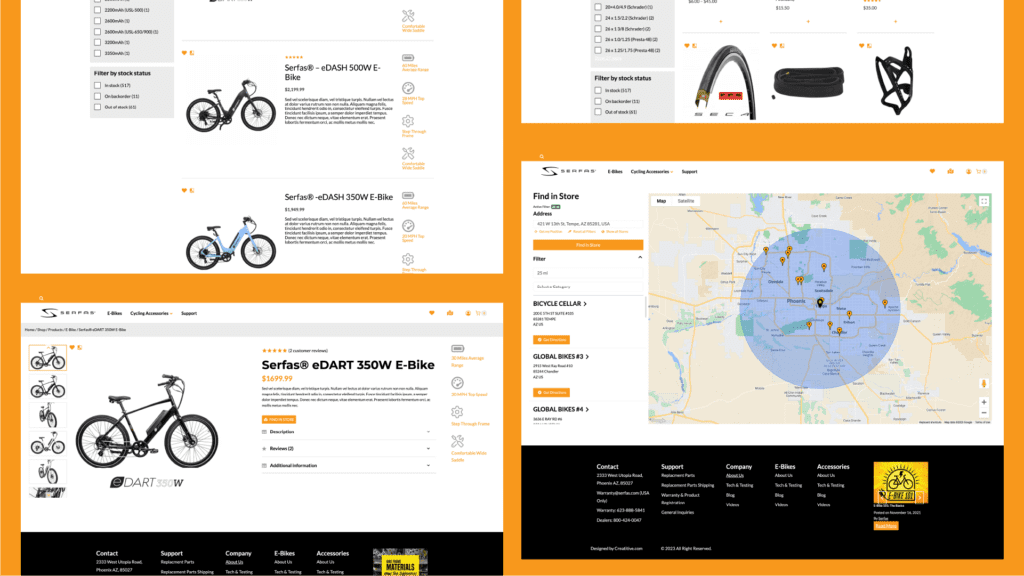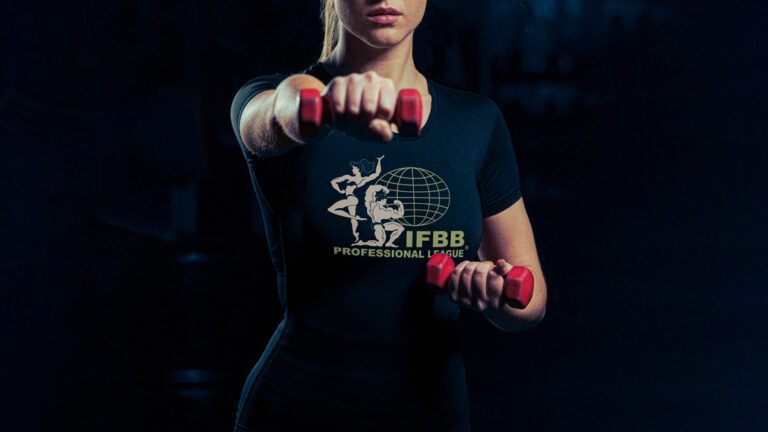The website of every successful fitness business is filled with content that interests gym goers and shares fundamental aspects of its facilities, membership options, the profile of its trainers, and an appealing visual image and aesthetic that appeals to them. Growing your gym goes beyond physical branding strategies.
Online profiles are also essential to generate a good impression on your gym members and target audiences. Developing a branding strategy for your gym website will improve your brand’s reputation and identity.
This article aims to provide gym owners with effective branding strategies for their gym website. We will delve into tactics, key points, and ways to improve your website to make it more appealing and exciting to your gym members and target audience.


Web Strategy
Start your website branding strategy with us!
Critical Strategies for Website Branding
Effectively branding your website involves a strategic fusion of design, content, and messaging to create a cohesive and memorable online identity. It begins with a deep understanding of your brand’s values, mission, and target audience, which should resonate throughout every website element.
Beyond aesthetics, crafting compelling and authentic content that aligns with your brand’s voice and resonates with your audience is crucial. Ensuring a seamless user experience, from navigation to interaction, reinforces the brand’s reliability and professionalism.
It is, in fact, a task that takes time and effort to be successful. However, the benefits your website and overall gym brand will perceive will be equally worth it. What are the advantages of developing a branding strategy for your website? Here’s a list of some of the benefits your business and webpage will perceive:
- Consistency Across Platforms: A well-planned website branding strategy ensures consistency in brand messaging, visuals, and tone across all online platforms. This consistency helps in reinforcing brand identity and recognition among the audience.
- Enhanced User Experience: A coherent and thought-out branding strategy improves the overall user experience on the website. Consistent branding elements lead to more straightforward navigation, better engagement, and a more intuitive interface, resulting in higher user satisfaction.
- Improved Credibility and Trust: A well-executed branding strategy instills confidence in visitors. Clear and cohesive branding elements convey professionalism and trustworthiness, encouraging users to engage further with the website and the brand.
- Brand Recognition: Vital branding elements make a website more memorable. Users who encounter consistent logos, colors, and messaging are likelier to remember and recognize the brand, fostering trust and credibility.
- Facilitates Marketing Efforts: A consistent brand presence on the website makes marketing efforts more impactful. Creating and executing marketing campaigns is more accessible when the brand identity is well-established and aligned across all channels.
These are just examples of the many benefits your brand will perceive by implementing a structured and functional branding strategy for your website. If you would like to know how to start developing this process, here’s how you do it:
Starting Your Gym Website Branding Strategies
Identifying your unique selling points is an excellent start to developing your website branding strategy. Showcasing what sets your product, service, or brand apart from competitors compellingly and distinctly.
These USPs encapsulate the core strengths, benefits, or features that resonate most with your target audience, addressing their specific needs or desires in a way that competitors cannot replicate.
Whether it’s exceptional quality, innovative features, unparalleled customer service, or a combination of factors, understanding and articulating these unique aspects enable businesses to craft powerful marketing messages that resonate deeply with their audience.
Establishing a clear mission and vision for your brand would be the second step of your website branding strategy process. The vision delineates the aspirational future the brand aims to create, outlining its long-term goals and desired impact on the world. It encapsulates the ultimate destination, inspiring stakeholders and providing a framework for strategic decisions.
Complementing the vision, the mission delineates the actionable steps and purposeful endeavors undertaken by the brand to realize that vision. It defines the core values, principles, and commitments driving the brand’s daily operations, influencing everything from product development to customer interactions.
Defining your target audience plays a vital asset in your website branding strategy. The content you continuously upload to your website needs to be focused on a specific approach according to your target audience’s needs and wants. Developing a market segmentation will help you identify your target audience’s fitness objectives and goals, making uploading relevant and exciting content easier.
Once you have worked on the points mentioned above, it is time to work on the visual identity of your brand and website.
Elaborating a Consistent Visual Identity
Different elements will help you create the perfect visual identity for your business. One of the most important ones is your gym’s logo. Crafting a logo that embodies a gym’s brand values involves distilling the essence of its identity, ethos, and aspirations into a visual symbol. This emblem becomes a visible ambassador for a gym, representing its core principles of health, strength, community, and transformation.
Whether through dynamic typography, abstract shapes suggestive of movement, or iconic imagery reflecting vitality and wellness, the logo must encapsulate the essence of the gym’s mission and values.
The color scheme is another aspect you should consider, as it sets the tone of your visual identity, reinforces your brand image, and evokes emotions in your gym members and online audiences. Each color holds psychological connotations; thus, understanding the impact is crucial when choosing a palette.
Colors should align with the brand’s personality and message for a website, logo, or branding. For instance, vibrant hues like red convey energy, passion, or urgency, while blues evoke trust, professionalism, and calmness. Harmonizing colors that complement each other enhances visual appeal and readability. Consistency in color usage across different platforms fosters brand recognition and reinforces the intended emotions associated with the brand, ensuring a cohesive and memorable visual identity.
Gyms aim for a consistent brand identity because it’s like having a superpower in the fitness world. Think of it as their unique stamp, the special vibe that sets them apart from the rest. With a strong and consistent brand, gyms become memorable—they stick in people’s minds like a favorite song. It’s not just about having a cool logo or catchy colors; it’s about creating a feeling, a promise of what the gym stands for. This helps attract the right folks who vibe with that energy and keeps them returning for more, building a loyal community of fitness enthusiasts.
A consistent brand identity is also translated into generating brand loyalty. A brand that is consistent with its brand identity is a brand that will be remembered by the customers and audiences easily.
Once you have decided on the appearance of your logo and the color palette you would like your visual identity to have, it is time to focus on the quality of your website content. High-quality visual content is a compelling reflection of a gym’s essence, capturing its walls’ vibrancy, energy, and dedication.
From striking images showcasing diverse workouts, state-of-the-art equipment, and engaged members to professionally crafted videos depicting the gym’s atmosphere and community spirit, visual content becomes a window into the gym experience.
Once you have set the tone of your visual identity and established a clear vision and mission for your website branding strategy, optimizing your website and its functionality is time.
Optimizing a User-Friendly Experience
A functional and user-friendly experience on your website is an asset that will help you achieve better results on your content, and it will be easier for your online visitors to find the information you are looking for. An easy navigation system on a website is akin to a well-marked roadmap, guiding visitors seamlessly through its content and offerings. It involves intuitive design elements such as clear menus, logical page hierarchy, and easily identifiable links that simplify the user journey.
From a user’s perspective, finding desired information effortlessly is paramount, and an efficient navigation system accomplishes this by reducing confusion and enhancing user experience.
Besides a system that is functional and easy to navigate, the way you introduce your services and products is another critical aspect. Implementing compelling calls-to-action (CTAs) is instrumental in encouraging user interaction and guiding visitors towards specific desired actions on a website. These strategically placed prompts serve as catalysts, nudging users to engage further, whether purchasing, subscribing to a newsletter, scheduling a consultation, or exploring more content.
Effective CTAs are clear, concise, and action-oriented, leveraging persuasive language and design elements that stand out on the page. By aligning with the user’s needs and intentions, CTAs create a sense of urgency or value proposition, compelling visitors to take the next step, ultimately driving conversions and achieving the website’s objectives.
Last but not least, adapting your website to all kinds of technological tools like mobile phones will become a vital asset of your website. Most of the research by gym-goers and online audiences is done on mobile devices. That is why you must adapt your services to all the possible devices.
It involves designing and optimizing a website to dynamically adjust and adapt its layout, content, and functionality to different screen sizes and resolutions. With the increasing prevalence of mobile browsing, a responsive design ensures that users have easy access to information, intuitive navigation, and optimal viewing regardless of their device.
Once you have designed a website that adjusts and adapts to all devices, it is time to start working on the extra assets you can implement into your website.
Online Bookings and Services
An online class schedule coupled with diverse workout plans and training options embodies the flexibility and accessibility demanded by today’s fitness landscape. It offers a comprehensive platform for individuals seeking tailored fitness experiences. It allows them to access schedules, choose from various classes, and customize workout plans that align with their goals and preferences.
Moreover, incorporating training options, whether live-streamed classes, on-demand workouts, or personalized training sessions, provides users the freedom to engage at their convenience, breaking barriers of time and location.
Promoting membership options on a website involves highlighting the value proposition and benefits of joining enticing visitors to become active participants in the community or services offered. This entails showcasing diverse membership tiers tailored to different needs and preferences and emphasizing each level’s exclusive perks and advantages.
Another advice would be to build your blog content for a specific goal. For example, member retention and adding new members from your target audience. Articles could cover advanced workout techniques, nutritional guidance, member success stories, community events, or mental wellness tips, aligning with the members’ goals and aspirations.
By providing consistent, high-quality content that addresses their challenges, motivates them, and fosters a sense of community, the blog becomes a powerful tool for strengthening relationships, promoting loyalty, and increasing member retention.
Work With Us!
At Creatitive, we believe it is important to provide our clients with a robust and cohesive branding strategy for they to rest assured that their fitness businesses and gyms’ marketing strategy and methodology are being developed with all the elements a strong branding strategy should have. That is why we invite you to contact us, give your business a chance to grow, and be managed by a professional and experienced team that delivers only the best services.
FAQ
Is Rebranding a Good Idea If I’m Working on My Website Branding Strategy?
Plan to make significant changes to your business. Your website branding strategy will be a strong ally for you to rebrand your gym successfully with your website changes and improvements.







